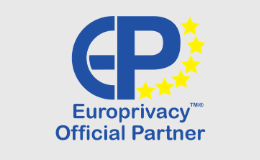Looking for?
Markets in Crypto-Assets Regulation in the home stretch
Busy week in Brussels before the Summer holidays. After reaching an agreement on the so-called Crypto Travel Rule, an agreement was now also reached on the Markets in Crypto-Assets Regulation or MiCAR. In this blogpost, we will have a look at the legislative procedure so far and what has changed from the European Commission’s initial proposal.
Regulatory opinions
The European Central Bank (ECB) provided its opinion in February 2021. Generally, the ECB would like to see a clearer demarcation between crypto-assets falling under MiCAR and crypto that could fall under MiFID2. Further, the ECB’s comments focus primarily on stability, and the ability of regulators to intervene when a certain crypto-asset would threaten that stability.
Also the European Data Protection Supervisor (EDPS) provided an opinion, in June 2021. Generally, the EDPS finds that a broader reflection is needed on how blockchain technology can be implemented in a GDPR-compliant way. Also the personal data processing activities under MiCAR should, of course, be fully GDPR-compliant. Moreover, the EDPS would like to see a more clear and explicit assignment of roles under GDPR – like controller and processor – to the different actors regulated under MiCAR. Also the white paper requirement is addressed as a potential place where controller could inform data subjects on their processing activities and intentions.
European Parliament and Council
The proposal has received an unusual amount of attention in the European Parliament. MEPs tabled a whopping 1160 amendments to the Commission’s original proposal. And this is not even an election year.
Luckily, not all of those amendments made their way into the responsible Committee’s report with which it entered interinstitutional negotiations.
The rules on stablecoins have been significantly tightened in recent drafts. This, of course, comes in the wake of recent stablecoin issues such as with Terra. For large stablecoins, there will be a cap of a maximum of EUR 200 million worth of transactions per day. This is a significant limitation given that some stablecoins today already daily handle volumes well into the billions. They will also be required to hold reserves to cover claims from tokenholders.
In terms of services, the text will add portfolio management on crypto-assets. Additionally, a list will be maintained of non-compliant service providers. The Council’s text also includes additional provisions for banks working with crypto-assets and asset-referenced tokens.
Initially, there was some doubt on whether non-fungible tokens (NFT) would fall under the scope of MiCAR. It is now made clearer that they will, in principle, not, unless they can be considered as one of the three core assets regulated by the framework.
Another issue raised during the procedure was the ever-increasing energy use of proof-of-work crypto like Bitcoin, and how that does not fit into the EU’s climate goals. Some legislators even called for an outright ban of proof-of-work crypto. In the end, the text will require crypto-asset service providers to declare information on their environmental and climate footprint. This information will feed into further legislative work, which may impose mandatory minimum sustainability standards on crypto. In other words, proof-of-work is not banned yet, but may face future regulatory trouble.
Also many other aspects of the broader realm of decentralized finance (DeFi) are not addressed by this framework. Regulation of that market, however, is still likely to follow.
Next steps
The text will now move to the European Parliament, with the intention of adopting it at first reading. Given the political agreement, it is not expected that the Parliament will still introduce any significant changes.
Once adopted, the new framework will become applicable at 18 months after adoption. This gives Member States the time to bring their national frameworks in line with this text.
For existing crypto-asset service providers, there will be a transitory regime. Essentially, they will be given a grace period after the framework becomes applicable during which they can obtain the necessary authorizations.
Consequences
As discussed previously, issuers of crypto-assets, asset-referenced tokens and e-money tokens will be subject to a whole bunch of new requirements. For all, this includes clear white paper requirements, for some, it even includes a licensing requirement. Also other crypto service providers – exchanges, platforms, brokers, wallet providers and even advisors – will also become subject to prior authorization and specific requirements depending on the type of service they provide.
This, of course, spells the end of the days in which everyone could give their crypto-related project a try without having to worry too much about the legal framework. Apart from a few specific cases, the market was not regulated after all. At the same time, some regulation was overdue given the many excesses and fraudulent practices in this field.
The crux of the matter is, as always, to strike the right balance between regulation and market development. Time will have to tell if the EU regulator managed that. The stricter rules on stablecoins may in any case prove to hinder their uptake. The hard daily transaction cap is already unrealistic for some of the larger stablecoins today, and that is even without very widespread adoption. It is clear that the legislator is shielding off this market for central bank digital currencies, and will not tolerate private competition. It remains to be seen how this can be enforced in practice given that those stablecoins do not have the same limitations elsewhere.
Also proof-of-work crypto will have work to do. Adopting energy-saving measures – such as layer2 protocols – or switching to more sustainable consensus mechanisms will likely be on the cards.
Do you have questions about crypto-assets? Please contact Timelex.








